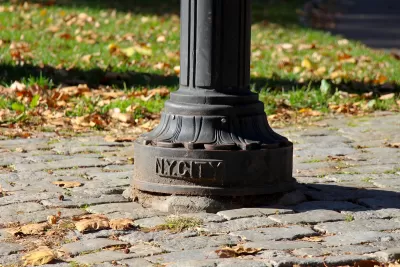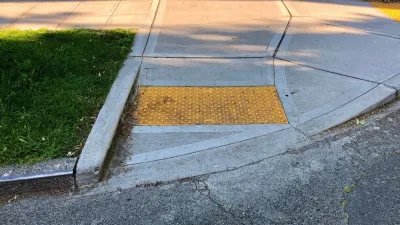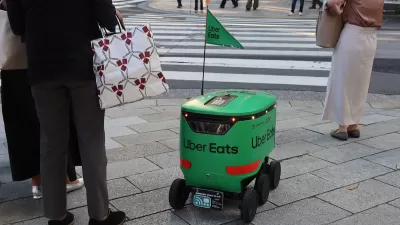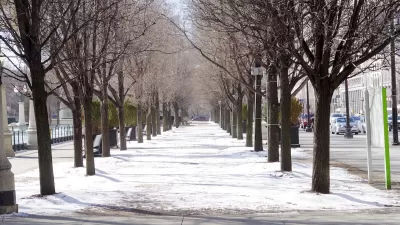The original tile and brick sidewalks now pose safety hazards and don’t fully serve modern accessibility and mobility needs.

A project to repair 108 blocks of sidewalks around New York City’s Central Park will make them more accessible to people using wheelchairs, strollers, and other mobility devices.
As Anna Kodé explains the The New York Times, the granite blocks and asphalt tiles in the century-and-a-half year old sidewalks now pose safety and accessibility hazards. “When the paved sidewalks were originally being installed in the 1930s, over 70 years after the first section of the park opened to the public, there were no electric scooters, Citi Bikes or people getting in and out of Ubers. Natural impediments have cropped up, too: Overgrown tree roots push up sections of the sidewalk, and pools of storm water collect in its dips.”
Now, the Central Park Conservancy is undertaking a massive restoration project that aims to balance preservation with accessibility. The group plans to restore some of the original design patterns while enhancing accessibility and safety, as well as preserving the park's elm trees, one of the largest stands remaining in the country. “The park’s prized American elm trees are a large part of why the restoration will take years to complete. The conservancy planted 58 new trees around the perimeter and is taking care to disturb the existing roots as little as possible as it installs the new sidewalk blocks and benches.”
FULL STORY: Fixing Central Park’s Bumpy Sidewalks

Trump Administration Could Effectively End Housing Voucher Program
Federal officials are eyeing major cuts to the Section 8 program that helps millions of low-income households pay rent.

Planetizen Federal Action Tracker
A weekly monitor of how Trump’s orders and actions are impacting planners and planning in America.

Ken Jennings Launches Transit Web Series
The Jeopardy champ wants you to ride public transit.

Rebuilding Smarter: How LA County Is Guiding Fire-Ravaged Communities Toward Resilience
Los Angeles County is leading a coordinated effort to help fire-impacted communities rebuild with resilience by providing recovery resources, promoting fire-wise design, and aligning reconstruction with broader sustainability and climate goals.

When Borders Blur: Regional Collaboration in Action
As regional challenges outgrow city boundaries, “When Borders Blur” explores how cross-jurisdictional collaboration can drive smarter, more resilient urban planning, sharing real-world lessons from thriving partnerships across North America.

Philadelphia Is Expanding its Network of Roundabouts
Roundabouts are widely shown to decrease traffic speed, reduce congestion, and improve efficiency.
Urban Design for Planners 1: Software Tools
This six-course series explores essential urban design concepts using open source software and equips planners with the tools they need to participate fully in the urban design process.
Planning for Universal Design
Learn the tools for implementing Universal Design in planning regulations.
Ada County Highway District
Clanton & Associates, Inc.
Jessamine County Fiscal Court
Institute for Housing and Urban Development Studies (IHS)
City of Grandview
Harvard GSD Executive Education
Toledo-Lucas County Plan Commissions
Salt Lake City
NYU Wagner Graduate School of Public Service





























